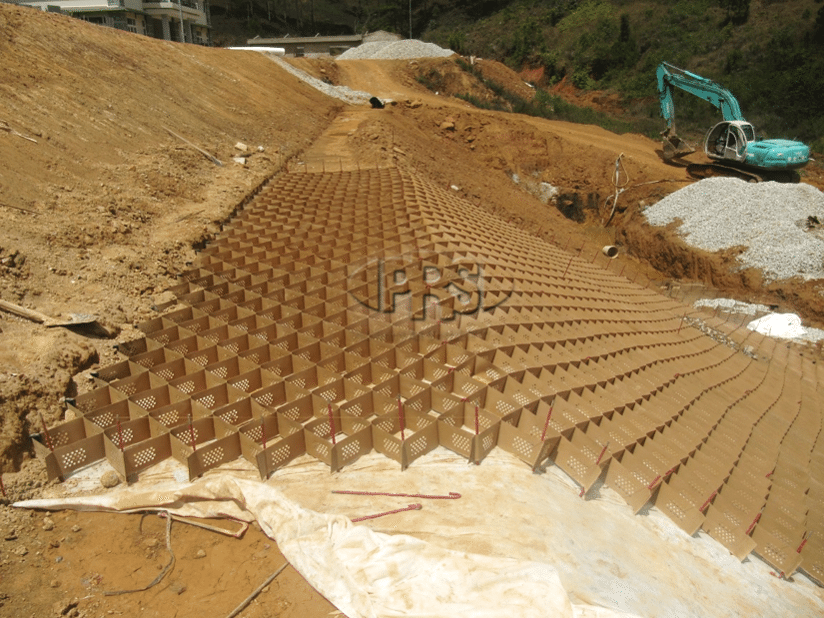Integrated Earth Stabilization Solution Reduces Soil Erosion
Neoloy®Tough-Cells enabled the Nuclear Research Center to prevent erosion and stabilize unstable slopes with a green solution.


Challenge
The Nuclear Research Center sits on a mountaintop of pine woods at Da Lat in Vietnam’s southern highlands, a popular resort and tourist destination. A new wing was constructed on the east slope of the site. However, the original steep gradient (covered with trees) was disturbed, unstable and required stabilization. The slope was 2 to 6 meters high at a gradient of 34 degrees, requiring earth stabilization and soil erosion control.
The Center wanted a solution that would not only stabilize the slopes and prevent erosion, but just as important, would also provide a green, attractive and ecological landscape around the facility, to integrate within the area’s natural beauty and forest cover.
Conventional Solution
A conventional engineering solution would have been a concrete reinforced retaining wall. This would have been an expensive, time consuming task involving large earthworks and form-works. It also would not have been a green solution. Segmented retaining wall solutions were considered as well but shipping, mechanical handling and logistics increased their cost.
Neoloy Tough-Cell Cellular Confinement System
Neoloy Tough-Cells were able to provide an integrated earth stabilization solution. This included a reinforced retaining wall to stabilize the slope at the base, and then slope protection for the middle two thirds of the hillside for a very cost-effective solution.
The retaining wall at the base of the wall consisted of 4 cells deep, 660-200 high geocells. These were laid out in offset rows varying in height from 2-4m according to the contour. There was no need to excavate a deep foundation. The two outer geocell fascia rows were filled with crushed stone infill, while the other two rows were backfilled with local soil and compacted.
445-120 high Neoloy Tough-Cells were used for the slope protection. The system was anchored on a 1.5m crest shoulder on top of a woven geotextile, and laid down the long slope with anchors distributed at a density of 1 sqm to stabilize the downslope forces. The infill was gravel with a 28-degree angle of internal friction for effective erosion control. The gravel infill was intended to protect the slope from runoff.
- Easy logistics and fast installation – cut construction time in half
- Reliable long-term reliability for retention wall
- Excellent method for restoration of vegetation due to root-soil interlock
- Green surface cover for aesthetic landscape
- Excellent drainage critical for this climate and rainfall
- Earthquake resistant solution due to system flexibility
- Considerable cost savings